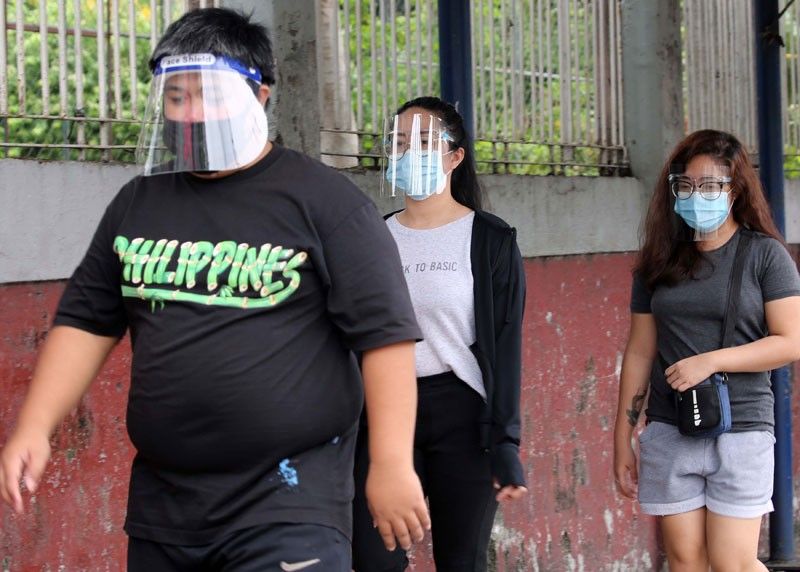DOH won’t ban home quarantine for asymptomatics

MANILA, Philippines — The Department of Health (DOH) is unlikely to ban home quarantine for asymptomatic and mild cases of the coronavirus disease 2019 even if it might have contributed to communitytransmission.
The DOH is still observing existing protocol allowing home quarantine for asymptomatic and mild cases of COVID-19, according to Health Undersecretary Maria Rosario Vergeire.
“We did not change our protocol. We still allow home quarantine, provided that people who will do the home quarantine can satisfy the conditions,” Vergeire said in a virtual briefing last Friday.
She added that asymptomatic and mild cases of COVID-19 are allowed to go on home quarantine as long as they have their own room with toilet, have no members of the vulnerable population at home and can be promptly monitored by the Barangay Health Emergency Response Teams.
National Task Force against COVID-19 chief implementer Secretary Carlito Galvez Jr. had previously attributed the high prevalence of COVID cases to home quarantine for asymptomatic and mild cases of the disease.
Galvez insisted that home quarantine for asymptomatic and mild cases would be disastrous for the country.
Vergeire, however, noted that there are other factors that have contributed to the increase in coronavirus cases nationwide.
“We have noted that home quarantine is among those that have contributed. Many are even saying that it contributed greatly, but there are still other factors why we have this community transmission, and not just due to home quarantine,” she said.
The DOH reported that as of Sept. 4, 45 percent or 9,534 of the 21,031 hospitals beds allotted for COVID-19 patients nationwide had been occupied as well as 50 percent out of the 1,786 intensive care unit beds.
The DOH also reported that 49 percent out of 2,739 ward beds and 43 percent of 13,612 isolation beds had been occupied.
Over 2.6 million individuals had been tested for the coronavirus, and of the number, 10.6 percent were found positive for the virus. Almost 70 percent of those who tested positive have recovered while 1.6 percent died due to the illness.
Latest figures
With the addition of 2,839 cases recorded from 96 laboratories, the DOH reported that confirmed COVID-19 cases nationwide jumped to 237,365 yesterday.
The DOH, however, said almost 70 percent or 184,687 of the confirmed cases have already recovered, thus reducing to 48,803 the active cases nationwide.
Through Oplan Recovery, the DOH recorded an additional 23,074 recoveries. The figure brought to 184,687 the total patients who recuperated from the infection.
The DOH said 19 laboratories failed to submit their data to the COVID-19 Data Repository System.
Of the newly reported cases, 81 percent or 2,302 occurred within the past 14 days and 39 percent or 894 came from the National Capital Region (NCR).
Aside from the NCR, the top regions with cases in the recent two weeks were Calabarzon (Cavite, Laguna, Batangas, Rizal, Quezon) with 594 and Western Visayas with 225.
The DOH also recorded 85 additional fatalities, bringing to 3,875 the total COVID-related deaths in the country. Of the newly recorded deaths, 29 occurred this month while the rest occurred from March to August.
The greater bulk or 41 of the newly reported deaths came from NCR while 15 came from Central Visayas and nine from Calabarzon.
In the same briefing, Vergeire reminded the public anew to observe health protocols and to immediately isolate themselves if they experience flu-like symptoms.
“It would be good to isolate to prevent the spread of the virus even before you undergo laboratory test to prevent the possibility of infecting others,” she said.
After undergoing 14-day isolation and his or her condition has improved, an individual can be assessed by a doctor and tagged as recovered without the need to undergo laboratory test, according to the DOH official.
StaySafe.PH
Vice President Leni Robredo yesterday expressed hope that the launch of StaySafe.PH, the country’s contact tracing application, will prevent the spread of COVID-19.
“Hopefully, with the launch of the new app, we can still catch up,” Robredo said in her weekly program over radio station dzXL.
The Vice President added that the app should have been launched as early as March.
“Contact tracing is really our biggest problem,” she said.
The Inter-Agency Task Force (IATF) on Emerging Infectious Diseases and its private partners launched the StaySafe.PH app last Thursday.
Multisys Technologies Corp. chief executive officer David Almirol Jr. gave assurance that the person who uses the app would not be placed under any form of surveillance.
The government had earlier said StaySafe.PH’s function would be limited to the collection of data that would be stored in the DOH’s COVID-Kaya system.
Robredo has been pushing for the use of a single contact tracing app in the country.
“One solution is the use of technology to make contact tracing faster and more efficient. Effective tracing apps are already available; this technology needs to be standardized so that (local government units) don’t end up working in silos,” she had earlier said.
Baguio City Mayor Benjamin Magalong, the country’s contact tracing czar, said for every confirmed COVID-19 case, at least 37 people have to be traced and identified to find out if they have been infected.
Over 200,000 contact tracers
Meanwhile, the country now has over 200,000 contact tracers, according to Interior Secretary Eduardo Año.
“We are thankful for our LGUs because their recruitment is continuous,” Año said in Filipino in an interview over radio station dzBB.
The Department of the Interior and Local Government (DILG) chief noted that law enforcement agencies, including the Philippine National Police (PNP), Bureau of Fire Protection (BFP) and the Armed Forces of the Philippines, have contributed manpower for contact tracing efforts.
“Yes around 238,000. These are composed of regulars and volunteers, to include personnel from PNP and BFP,” Año said in a text message.
He added that it is still looking to start the planned mass hiring of 50,000 contact tracers within the month.
A P5-billion budget has been allocated for contact tracing efforts under the Bayanihan 2 bill, which has yet to be signed by President Duterte.
The DILG was targeting to reach 135,000 contact tracers nationwide in order to meet the recommendations of the World Health Organization of a ratio of one contact tracer for every 800 people. – Helen Flores, Romina Cabrera
- Latest
- Trending






























